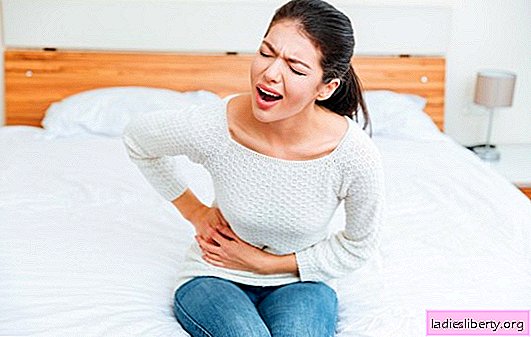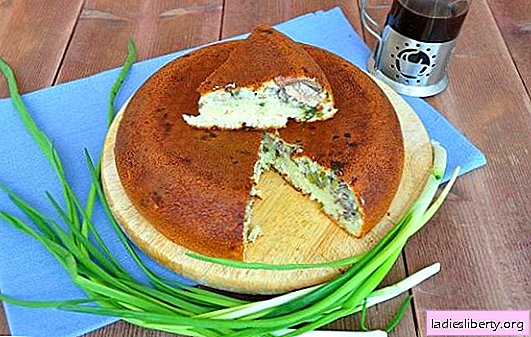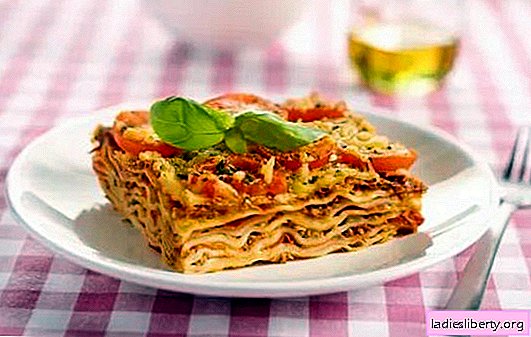
Acute pain attacks in the lumbar region are called renal colic. Faced with this problem in the majority after 20 years, rarely in childhood. This is not a disease, but a sign that some disturbances are occurring in the body.
Today we’ll talk about how to treat kidney colic at home.
Causes of Renal Colic
There are many causes of renal colic. We will single out the main ones:
• the stones. Their presence in the kidneys and ureter forms a blockage. It can form either complete or partial, depending on the outflow of urine to a greater or lesser extent;
• blood clotswhich may subsequently form an obstruction in the ureter. It occurs most often in case of injury, tumor;
• an excess of the ureter or its significant narrowing. Most often occurs due to the omission of the kidney, its trauma, improper congenital structure;
• purulent masses accumulated in the kidney cavity. Subsequently, partial or complete blockage of the ureter may occur. In this case, treatment of renal colic at home is not possible. Inpatient therapy is indispensable;
• sometimes, due to the use of certain medications, a severe allergic reaction occurs, and subsequently swollen ureter;
• excessive overload when near the spasm of other muscles occurs muscle spasm of the kidneys.
How women, without suspecting it, expose themselves to renal colic
The female body has its own structural features, including with respect to the kidneys.
The fact is that the kidneys are located and supported by a small layer of retroperitoneal fat, and when a woman, striving for harmony, dramatically loses weight, the kidney may drop, as she lost the fat that kept her in the right position. In very thin women, both kidneys are lowered, which threatens stagnation of urine in them.
If the kidney does not receive the right amount of blood, the production of renin begins. As a result, the pressure rises, in addition, it is impossible to cure hypertension of this nature only with the help of the usual drugs.
Symptoms of Renal Colic
An attack of renal colic often occurs sharply in the lower back, rarely it is an increasing pain that begins from discomfort in the kidney area. Hard physical work, running, riding a motorcycle can provoke an attack, and it can occur regardless of the load. Initially, there is pain in the lower back, then it passes down the ureter, can be localized in the groin or given to the genitals.
One of the symptoms is the appearance of blood clots in the urine. If there are stones in the ureter, pain occurs in the abdomen. Depending on the location of the stone, chills may be added to the above, the heartbeat becomes faster, the temperature rises.
First aid for renal colic
If an attack occurs, it is better to call an ambulance. But before her arrival, you can try to eliminate the pain yourself.
Important! First aid can be provided when pain occurs on the left side, as well as when a history of renal pathologies is prescribed. Right-sided colic may indicate inflammation of the appendix.
You can relieve an acute attack of pain by such measures:
1. Strengthen the drinking regime.
2. With repeated colic and the presence of stones, apply heat to the lumbar region. It can be a heating pad, a bottle of warm water, a bag of heated sand. A hot sitz bath, which should be taken about 15 minutes, will not hurt.
3. The patient can be given painkillers or antispasmodics. They will help reduce pain, relieve inflammation. Such drugs are suitable:
• No-shpa;
• Papaverine;
• Revalgin.
If possible, it is better to enter them intramuscularly.
When medication cannot be dispensed with
In some cases, with renal colic, it is impossible to do without the help of a specialist. It is necessary to call a doctor if:
• the patient has one kidney;
• one kidney wanders;
• therapy to improve the patient’s condition lasts more than two days, but improvement does not occur;
• colic is felt in both kidneys;
• critical body temperature;
• urine is practically not allocated;
• there is nausea and vomiting.
It is advisable to consult a doctor for another reason, in order to exclude another pathology, since similar pain sensations can occur with appendicitis, and in women with gynecological diseases.
Herbal medicine - an effective method of treating renal colic at home
Our ancestors used herbs as the main method of combating various diseases. Nowadays, many herbs are used as the basis in many medications.
Often, patients resort to herbal medicine. In most, those medicinal plants are preferred from which decoctions and infusions, as well as teas, can be prepared. But in order to get the maximum effect from such treatment, the herbs used must have the following properties:
• painkillers;
• antispasmodic;
• astringent;
• enveloping;
• antipyretic;
• diuretic.
The following herbs possess the above properties:
• knotweed;
• bearberry;
• chamomile;
• plantain;
• field horsetail;
• blue cornflower flowers;
• root and parsley grass;
• Birch buds;
• orthosiphon.
Below, we consider examples of folk recipes for the treatment of renal colic at home.
Knotweed juice as an affordable effective remedy
The knotweed or mountaineer bird can remove stones from the kidneys, normalizes salt metabolism in the body. To prepare the medicine at home, you must:
1. Wash thoroughly.
2. Using a meat grinder or a blender, grind to a mushy state.
3. Pour boiled water until a liquid substance is formed.
4. Pour everything onto a gauze cloth, squeeze it.
The product is ready to use. Drink it should be three times a day, 100 ml.
Important! Since knotweed is capable of destroying tooth enamel, it is better to drink it through a cocktail tube.
Straw compress
To make a compress, straw is used precisely for oat. Pour boiling water over it, cover with a lid, leave for 10 minutes. Now the water needs to be drained, the straw placed in a cotton cloth. When the straw has cooled, apply to the lower abdomen. Keep to cool completely. During the day, do the procedure twice. Due to the fact that it warms up, colic stops, stones come out easier.
Cowberry leaves from renal colic
To prepare a cure for colic at home, you need to pour a tablespoon of leaves with a glass of boiling water, put everything in a saucepan, put on low heat. After 10 minutes of boiling, strain, add a teaspoon of honey. The tool is ready. Take 1 glass three times before meals. The course is at least a week.
Watermelon
To quickly remove calculi from the kidneys, you need to eat at least a kilogram of watermelon throughout the day. In this case, it is better to sit in a bath with warm water. Apply cabbage leaf to the kidney area, fix. Previously, it must be crushed by hands. If the pain is very severe, it is recommended to put a heating pad on the stomach. You can also hold a hot water bottle between your legs.
A mixture of carrots with honey is an excellent remedy for treating renal colic at home.
You can prepare a useful and tasty remedy to combat colic with carrots and honey. To do this, take a medium-sized carrot, grind on a fine grater, add a dessert spoon of honey. Mix everything until smooth. The drug is ready to use. It should be drunk 15 minutes before meals three times a day. The course of treatment is 30 days.
Carrots can be replaced with onions. Its juice is mixed in equal proportions with honey, they are drunk 20 minutes before a meal with a dessert spoon. Besides the fact that the medicine will help dissolve the stone, it will also improve the blood flow of bile.
Renal Colic Prevention
Preventing the development of renal colic is easier than eliminating. The important thing here is to follow simple rules:
• the use of vitamins in sufficient quantities;
• drinking the right amount of water. The daily norm is 8 glasses;
• timely fight against inflammation that occurs in the urinary system;
• timely detection of pathologies of the structure of the kidneys and adjustment.
If seizures have already occurred, it is necessary to add therapeutic nutrition to preventive measures:
• juices, fruits and vegetables, dairy products;
• foods containing dietary fiber;
• reduce the consumption of such products: cereals, eggs, fish, meat, legumes.











